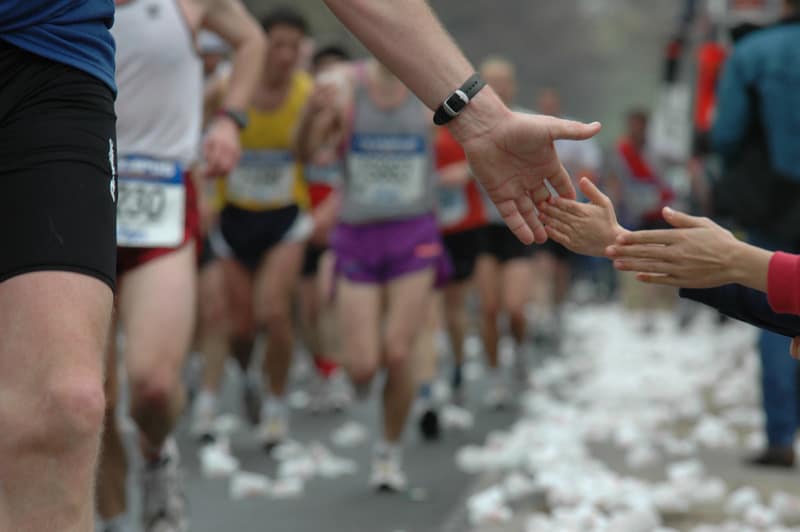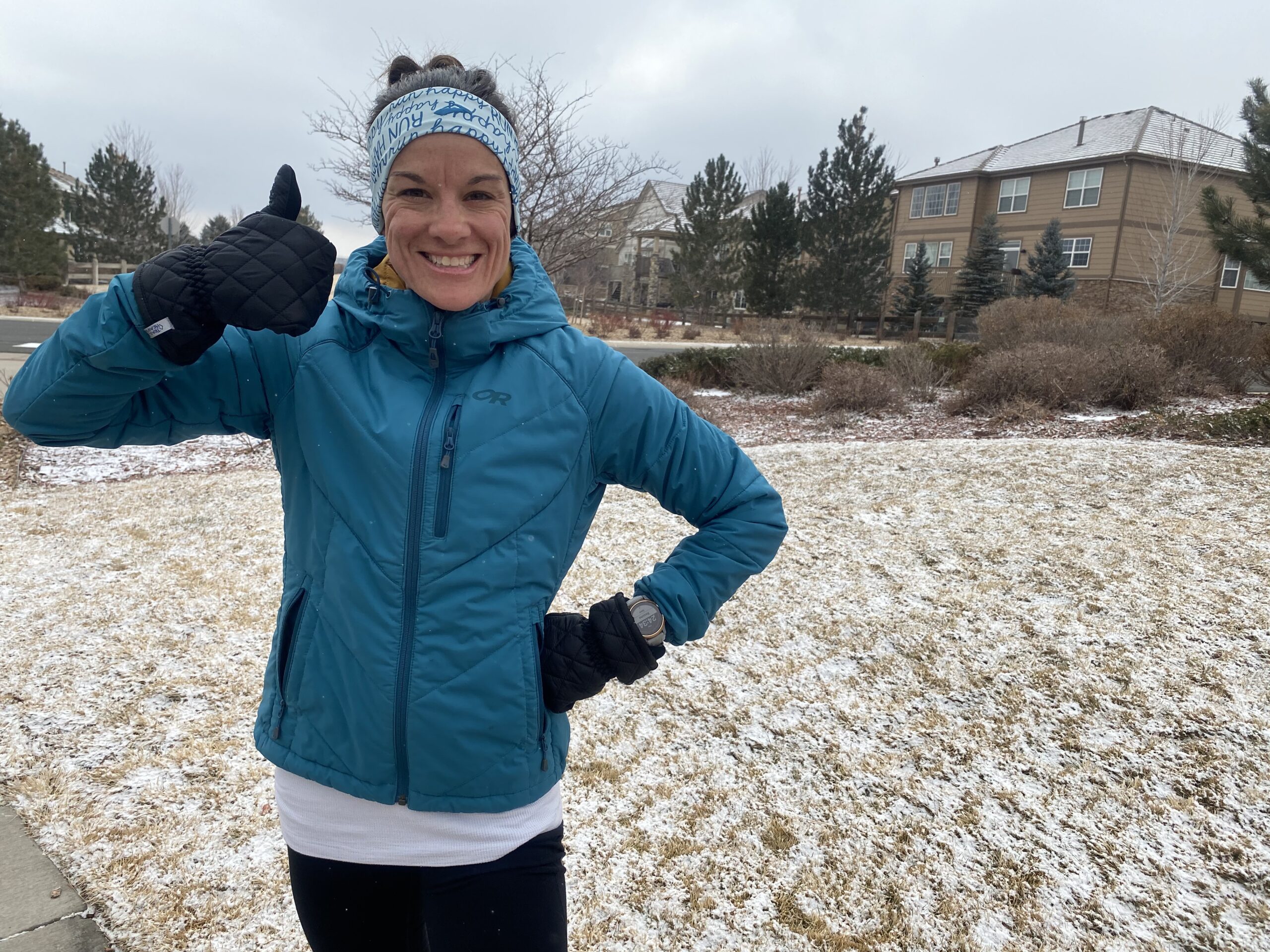I began running in 2001, and this is how I approached every single run. I would decide how far I was going to go, then lace up and head out the door to run the fastest pace I could hold for whatever particular distance I was doing. This type of training basically went on through my first two marathons and all the way until I started training for my 10-year return to the marathon distance. I’m sure somewhere along the way someone expressed to me the concept that in order to get faster I’d have to train slower, but I honestly believed that by doing it my way meant I was pushing myself to my highest potential. I had no idea that instead of being the best runner I could be, I was actually limiting myself by using this approach.
After you read this article, you’ll understand why running slower is going to help you run your marathon faster.
- You will develop your aerobic system appropriately.
- When more of your runs are done at a slower pace, you are able to run farther distances.
- Slow runs through the week allow you to bring the speed on the days when that’s your focus.
- Avoiding injury is a huge reason you need to run slower more often.
- You’ll actually enjoy your training instead of dreading it.
When my husband and I decided to run a marathon together in 2017, it took a lot of convincing that training slower makes you ultimately run faster. With a lot of research, we finally allowed ourselves to trust the process.
I really want you to understand this a lot sooner than I did. I’ll be the first to admit that it’s a scary thought when 4+ months of your life are dedicated to this training and you want to do everything right. I’m here to tell you that if you want to run a faster marathon, you have to train slower.
Develop Your Aerobic System by Running Slower

Aerobic versus Anaerobic
When we exercise we develop two different systems in our bodies. The aerobic system means “with oxygen” and is the type of exercise you are performing when doing what most people refer to as cardio exercise. Anaerobic is exercise “without oxygen.” This refers to any type of exercise in which you are maxing out your abilities – you might think of it as “all out” or “high intensity.” If you quickly feel out of breath, that is anaerobic exercise. Running can be both.
On your speedwork days or when you are running at speeds between your 90-100% maximum, you are building your anaerobic system. You absolutely need to include some of this into your marathon training.
But it’s the aerobic running that’s often undervalued. This is the system in which you should be spending about 80% of your running mileage. Doing so will develop your aerobic system which you need to do to be a better marathon runner.
Your Aerobic System for Marathon Running
Aerobic runs are your “easy” runs. Some like to refer to them as “conversational pace.” It’s also the type of running expected on your recovery days. An example of what this should look like is planning to run 6 miles and being able to complete that 6 miles without any shortness of breath. You should feel like you have all the oxygen you need for the duration of the run. Over time, you will build your aerobic system.
Why do you need to build your aerobic system as a marathon runner?
In order to run an entire 26.2 miles, you will need to give your body plenty of time to safely and properly develop your aerobic system. A well-trained aerobic system means you’re more readily able to move oxygen around your body to create energy as your distances increase. By building a more efficient aerobic system, you’re not only able to physically perform the demands of the marathon distance, but you’re also able to do it at a quicker pace.
Creating a well-developed aerobic system is vital as a marathon runner.
Run Farther Distances by Running Slower
Building up your aerobic system over time is the number one factor in your ability to run any endurance event. By doing so, you’re improving the overall fitness of your cardiovascular system. Almost all of the energy contribution made to completing a marathon comes from your aerobic system…with only the small percent left being attributed to your anaerobic system. In fact, even if you plan to run a 5k during your marathon training, the majority of your energy will still be pulled from your aerobic metabolism.
This is attributed to the physiological component that when your aerobic system is at work, your body is learning how to efficiently tap into fat and carbohydrate (glycogen) stores for energy. When a particular heart rate is referred to as the “fat-burning” zone, this is what they mean. An efficient aerobic system burns fat for its main source of energy and this is built up over time from running more slowly. Conversely, when you run fast, your body relies on its glycogen stores. You can only store so much glycogen in your body as I discussed in this article, whereas fat is a longer-lasting source of fuel.
I like this analogy from ptdirect.com which gives us a better understanding of why the less-power producing aerobic system is so important for endurance.
“Think of this capacity as the fuel tank of the diesel bus – it is so big that it’ll hardly ever run out of fuel.”
When the body’s muscles learn to use fat more efficiently, you build up your fuel tank. This allows you to run farther distances and for longer periods of time without running out of energy. This makes part sense to most runners. It’s the part about speed that people have a harder time wrapping their heads around.
Running Slow Most of the Time Actually Makes You Faster
1.) You’ll Run a Faster Marathon
Your aerobic system is not only responsible for your body’s ability to adjust to running more easily for longer periods of time, but it’s also what makes you faster in your races. This is true for any race more than a mile long.
Since your aerobic system requires oxygen to perform its function, your body has to adapt to using this system for as long as possible. Once your anaerobic system kicks in, such as that last all-out push at the end of a race, you won’t have any more to give until you slow down enough to catch your breath. When your body starts to require its anaerobic system, that’s the point you start to fall behind in a longer race.
When you have a bigger aerobic engine, your body can pump blood and move oxygen to your muscles more easily. The ultimate goal is to run as long as possible at a high-intensity (your marathon in this case) without having to tap into your anaerobic system.
Over time, and with proper mileage build-up, your easy pace will become non-existent as your mid-pace starts to become your easy pace.
2.) Get Faster on Speedwork Days
Not only will your long runs become easier at the same pace, but by keeping the easy days easy, your fast ru ns will get faster. The goal is that those 7:30 800s that felt close to impossible during the beginning of your training start utilizing a lot more of your aerobic system as your training moves along. Suddenly 7:30s don’t seem so bad, and you’re able to perform your 800s at a 7:15. This is anaerobic training and it has high importance, too. But an important component to being a faster runner during your speedwork comes from your base – all that slow running build up that you do week after week.
ns will get faster. The goal is that those 7:30 800s that felt close to impossible during the beginning of your training start utilizing a lot more of your aerobic system as your training moves along. Suddenly 7:30s don’t seem so bad, and you’re able to perform your 800s at a 7:15. This is anaerobic training and it has high importance, too. But an important component to being a faster runner during your speedwork comes from your base – all that slow running build up that you do week after week.
Another reason why you’ll be faster on speedwork days from all your slow running workouts is that your body will be ready to give peak performance. Sore, tired muscles and joints will only slow you down. If you aren’t ever running easy, you will continuously fall short of your expectations on speedwork days. When speedwork day comes (or a shorter race that falls within your training cycle), you want to be ready to nail those fast paces.
Get to Your Marathon Injury-Free
Most injuries sustained by marathon runners are from overuse. Either mileage was built up too quickly or as we’re discussing here, too many miles were run at a mid to high-intensity pace.
When you’re training for a marathon, your goal is to make it to the starting line healthy and ready to run. Agreed? But so many runners don’t get this part right. And it’s not because they weren’t dedicated over the course of their training. Often it’s because they were too overzealous.

When you set out to reach a goal and you are in full-on commitment mode, it’s extremely difficult to convince yourself that slowing down is the way to succeed. But where running is concerned, particularly marathon running which is so hard on your body, you can’t go full speed ahead 100% of the time. And when you realize that even going as fast as you can half the time is too much, it’s disconcerting. For a competitive spirit like myself, this is one of the hardest parts of the marathon process to come to terms with.
The bottom line is that although speedwork serves an important purpose, it places extra stress on your joints, tendons, and muscles. When you don’t give your body time to recover between hard runs, these parts of your body quickly pay the price. You will find yourself in a world of hurt in no time. Luckily, you don’t have to stop running in between hard runs to recuperate, you just have to run slower. Much slower than you probably want to, but as we already said, those runs aren’t worthless. On the contrary, they’re the number one way to build your endurance and become a marathon runner.
Enjoy the Slower Running
We’ve all heard the saying, “It’s a marathon, not a sprint.” We use it in reference to something besides running. But consider the phrase, and consider what it is you’re setting out to do. The point is, not only is your race a marathon, but you have to approach your training this way also. It’s normal to want to achieve something as fast as possible, but people spend years – even decades – perfecting their marathon racing strategies. The only way that you are going to end up where you truly want to be is if you take the time to enjoy the process. The long process.
The best way to do this is by taking the time to run slowly. Trust me, I get that for some, running slowly maybe doesn’t sound that fun. But mostly effortless running where you can talk with a friend the whole time, listen to an audiobook, or binge-watch your favorite Netflix show (if you’re training on a treadmill) will make it an enjoyable experience. Getting out and running somewhere new is another great way to take in scenic views where you don’t have to worry about pace.
Trying to run fast on all of your runs is hard and exhausting. Even if you don’t hurt yourself, you’ll probably burn out anyway, and never want to train for a marathon ever again. That’s exactly what happened to me in my 20s. Though I finished both of those marathons, I couldn’t run the entire way and I chalked it up to the fact that my body just wasn’t cut out for marathons. The truth was that I was approaching my training all wrong.

Finding your Easy Pace
Hopefully by now, it’s clear to you why all of those easy runs are so important for both your endurance and speed. Now you need to know what those paces are going to be and how often you should be running easy.
75-80% of your mileage should be performed at an easy pace.
Easy pace is different for every runner. The following table will give you a good idea of how to target that easy pace.
| By Feel | By Heartrate (about 52 - 70%) | By Pace |
|---|---|---|
| 1) You can hold a conversation. 2) You can breathe through your nose. 3) You easily maintain that pace at high miles. | Male: 214 - Age multiplied by 0.8 Female: 209 - Age multiplied by 0.8 | 2 minutes slower per mile than your 5k pace is a good rule of thumb (if you ran 8 min/mile in a 5k, your easy pace is 10 min/mile) |
Online calculators such as this one can be a great tool for different paces you want to be utilizing in your training. But just remember that no one knows your body better than you do and no calculator is going to work perfectly for every runner. Be prepared to adjust give or take. Here are the last two things to remember as you head out for your run today:
- Don’t worry about going too slow. As long as you are still running, you are working your aerobic system – the engine that’s going to allow for you to run a faster marathon.
- Even on your speedwork days, you need to incorporate easy running both as a warm-up and cool-down. That easy running allows you to log more miles and get more out of the high-intensity running you performed.
*Heart rate pace formula attributed to www.heartmonitors.com, where you can also receive all of your specific heart rate zone calculations.







